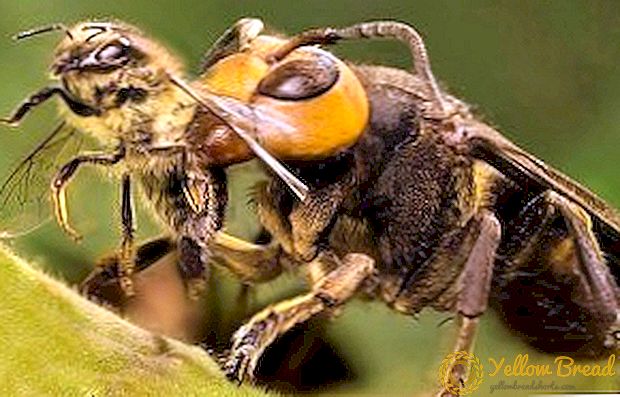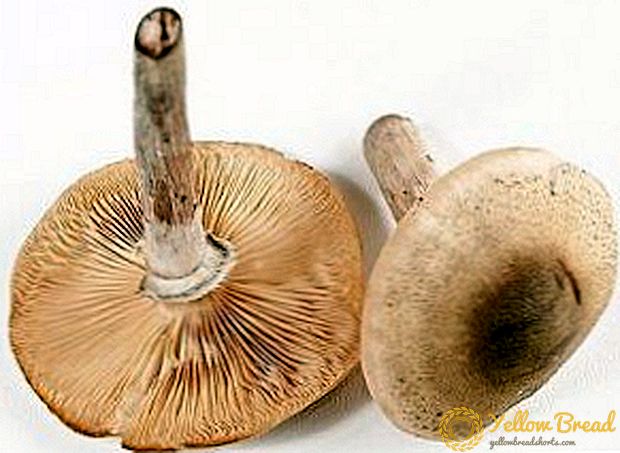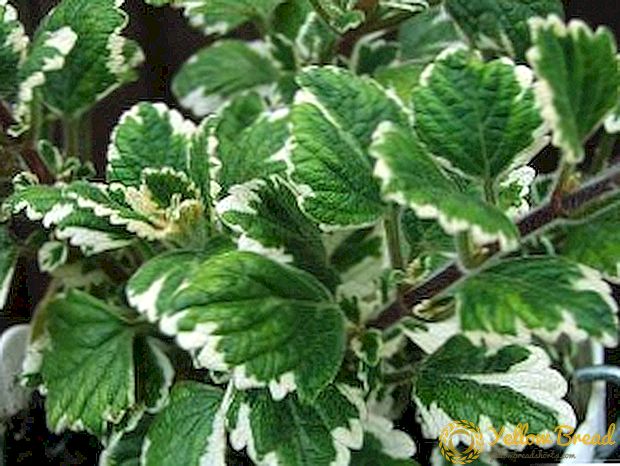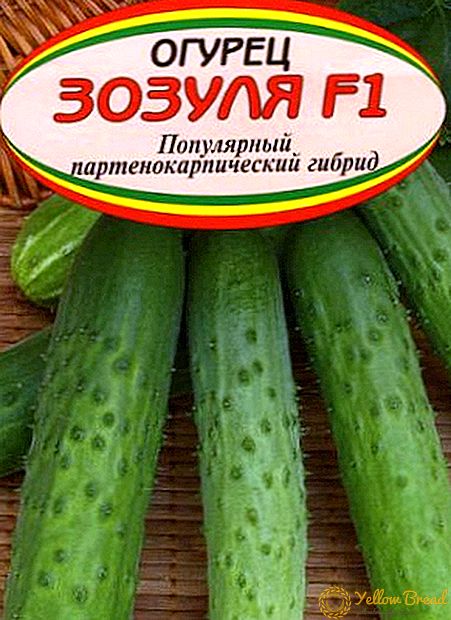
Only the right "prewinter" preparation can ensure a normal wintering of the vineyard. It is necessary to prepare in advance for the onset of cold weather. Frosts are especially destructive for annual shoots that did not mature.
The task of the grower is to ensure that the entire growth of the current year meets the onset of frosts finally ripe.
For this it is necessary: to stop watering the bush during the period when the berries ripen; from the last dressings eliminate nitrogen fertilization; after harvesting the berries, thinning the vine bushes and removing the leaves; practice shelter in late autumn - in late October - early November.
The dependence of harboring different varieties of temperature
Grapes - a plant that usually grows in countries with a temperate climate, subtropics or tropics. For grapes, regions with mild winters are more suitable. But there are varieties of grapes that, without loss, can tolerate lower temperatures.
These varieties are characterized by increased frost resistance and winter resistance.
Frost resistance is the ability to survive in the period of frost. And winter hardiness is the ability to resist a combination of adverse winterconditions: frost, icing, etc.
According to the degree of frost resistance, grapes are divided into 5 groups:
group number 1 (high resistance): those varieties that are able to withstand the temperature drop to minus 25 ... -28 ° C, while 80-100% of the eyes remain;
group number 2 (increased stability): those varieties that are able to withstand a drop in temperature to minus 23 ... -27 ° C, while 60-80% of the eyes remain;
group number 3 (medium resistance): those varieties that are able to withstand a temperature drop to minus 18 ... -21 ° C, while 40-60% of the eyes remain, the vast majority of grapes belong to this group;
group number 4 and number 5 (weak resistance): those varieties that are able to withstand a drop in temperature to minus 13 ... -17 ° C, while 100% of the eyes may die.
Such a division of varieties into groups is not unconditional, each variety has its own characteristics, which may fall under the definition of different groups.
Different parts of the bush also have different frost resistance:
- the root system of the bush is less resistant to frost than the vine (up to -9 ° C table and technical varieties, up to -14 ° C - rootstock varieties);
- frost resistance of the kidneys is different: the most stable dormant, less stable lateral, even less important buds;
- hardiness of wood depends on its age. Long-term is more frost-resistant, and one-year - less.
If in the region the temperature in winter drops below -21 ... -24 ° С, then it is necessary to cover all grape varieties, if the temperature drops to -16 ... -20 ° С, then it is allowed not to cover frost-resistant varieties.
Preparing for harboring
What is the preparation time?
A month before the beginning of harboring grapes (that is, in mid-September), it is necessary to remove the bunches of grapes and prune.
Very often, beginners growers ask how to properly prune a bush. There is a simple way: leave three vines on the right and left, which have finished fruiting, and cut off the underexposed part and excess shoots. Cuttings need to prepare at the same time.
By mid-September, you need to start watering the bushes of grapes. If the soil is light, then this operation is necessary. In winter, dry soil cools faster and to a greater depth than wet soil.
It should be watered at the rate of 20 buckets of water for each bush. Only at first glance it seems that it is a lot.The soil should be soaked with water as deeply as possible. In winter, the water will rise in the soil capillaries in the form of steam and thus warm the soil and the roots of the vineyard with its warmth.
Now you can go to the main point: hiding
When do you need to cover the grapes?
For each climatic region has its own time of harboring a vineyard. Experienced winegrowers advise to cover the bushes after leaf fall.
It is worth noting that the first frosts only harden the bush and increase its endurance. It is only necessary to ensure that the temperature does not fall below -5 ... -8 ° C. After that, with the onset of constant frost, the grapes must be covered.
There are several ways to shelter grapes for the winter:
grape shelter ground

This, the most ancient method has become widespread. The effectiveness of such a shelter depends on: the depth of the grooves in which the vine is laid; the height of the poured earth; soil moisture.
There are some drawbacks to the ground cover. The fact is that such protection leads to a decrease in frost resistance of the vine. The most favorable conditions for wintering the grape bush - depth 30-40cm embankment.The thickness of the mound above the eyes of the whips should not be less than 15-20cm, as this can lead to the freezing of the kidneys.
It is also necessary to take into account the fact that under the action of precipitation and during the thaw, the earth settles and the layer of the earth embankment can significantly decrease.
It is also worth avoiding excessive shelter of the vine, otherwise the vine may "crush" and as a result the vineyards will die. To do this, it is necessary to prevent the vines from contacting the embankment of the earth: lay connected boards, for example, boards, fragments of slate, any available material.
Thus, a layer of air is formed under the embankment of the earth, which is an additional thermal insulation and reduces the risk of negative effects of sub-zero temperatures on the hive.
Before sheltering it is advisable to whitewash the vine with a solution of any lime. This prevents the formation of mold and infection with spotted necrosis.
Shelter grapes shields
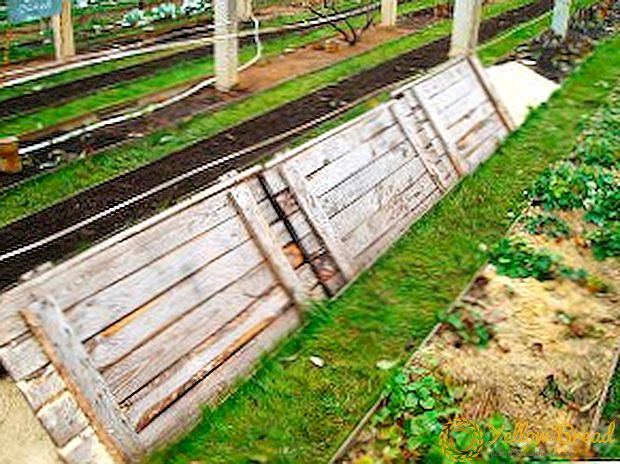
The technique of shelter shields is nothing complicated. It is necessary to make a wooden structure - shield, about one and a half meters long and about thirty centimeters wide. Such flaps can be fastened together by loops.
The guards are set "house", inside the guards are upholstered with roofing felt (weat). This gable design is very convenient and economically feasible, as it can serve for several years. Thermal insulation is also performed at the ends of the structure: roofing material (roofing felt) and additional shields by the size of the hole.
With this type of cover, it is also necessary to exclude the contact of the bush with the ground. For this purpose, any available material is used: boards, branches from pruning trees, etc.
The vine must also be whitened before shelter.
The disadvantage of the method is the complexity in the manufacture of shields. This method is suitable for owners of a small vineyard on the plot.
Slate grape shelter
The method is quite simple. Scourge of grapes is divided into 2 sides and tied in a kind of convolutions, the so-called fashinki.
As a material for wrapping use, for example, old bags. After that, the soles packed up in this way are placed into previously dug-out ditches, about 20 cm deep, directly on the ground, without bedding, and pinned them with metal clips to the ground.
In advance of the vine grapes must be treated with a solution of lime, as described above. Top grapes harbor slate. Then a layer of earth is poured, and an air layer is formed inside, which serves as heat insulation for the bush.


